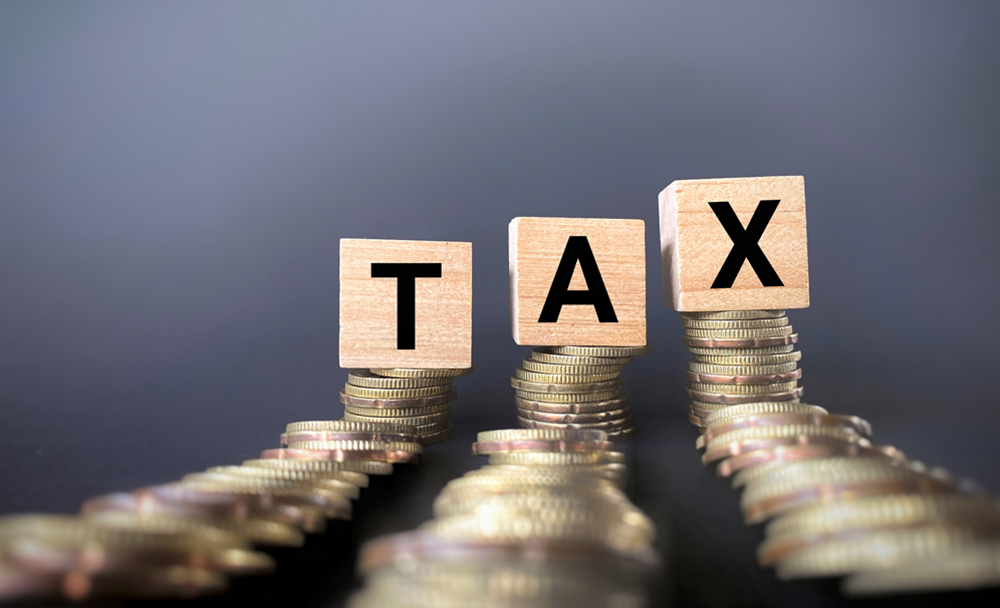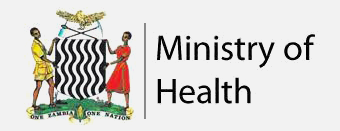
Illicit trade in cigarettes in Zambia
Illicit trade can be any practice or conduct which is prohibited by law and relates to production, shipment, receipt, possession, distribution, sale or purchase of a product, including any practice or conduct intended to facilitate such activity.
Illicit trade in tobacco products poses a serious threat to public health because it increases access to products, often cheaper ones. This fuels the tobacco epidemic and undermines tobacco control policies. It also reduces government revenue, and may contribute to the funding of international criminal activities.
Until recently, there have been no independent studies estimating the size of the illicit cigarette market in Zambia. This page provides insights into the prevalence of illicit cigarettes in the Zambian market, based on a cross-sectional study (hereafter referred to as the Development Gateway Zambia Illicit Cigarette Trade Study) carried out between November and December 2022.
In the study, a total of 118,344 empty cigarette packs were collected from retailers and the streets/bins in 25 districts, including 9 border districts and 16 inland districts, covering Zambia’s 10 provinces. Each pack was examined to identify illicit cigarette packs that did not meet any of the following criteria: having a textual health warning in English stating “TOBACCO IS HARMFUL TO HEALTH”; and having a tax stamp from the Zambian Revenue Authority (ZRA). Packs meeting the first two criteria were considered illicit if they had a duty-free stamp but collected from a retailer that was not authorized to sell duty-free cigarettes.The Development Gateway Zambia Illicit Cigarette Trade Study estimated the proportion of cigarettes sold in Zambia that are illicit, as a result of either tax non-compliance or non-compliance with textual health warnings, at 12.2%. The proportion due to tax non-compliance was 10.9%. The proportion that was non-compliant with textual health warning requirements was 1.55%.
For more information on the results of this study, please download the factsheet here
This section compares the prevalence of illicit cigarettes in Zambia with that in other countries in sub-Saharan Africa. It also compares the prevalence of illicit trade across the 10 provinces in Zambia between urban or rural classifications and also between border and inland districts.
Prevalence of illicit trade across countries in sub-Saharan Africa
The prevalence of illicit cigarettes in Zambia is relatively low at 12.2%, compared to other Sub-Saharan African countries such as South Africa (54%)
and Ethiopia (45%).The prevalence of illicit cigarette trade across countries in the region
Source: Own computations from Zambia Illicit Cigarette Survey (2022)
Prevalence of illicit cigarettes across provinces in Zambia
The prevalence of illicit cigarettes across the provinces in Zambia varies widely, from 0.4% in Copperbelt to 32% in the Western province. In addition to the Western province, Lusaka and Luapula provinces also reported a high prevalence of illicit cigarettes, of 24.6% and 18% respectively. In most provinces, the prevalence of illicit cigarettes was mostly driven by non-compliance with tax. The only exception is the Western province, where non-compliance with textual health warnings was the dominant form of illicit cigarettes.
Prevalence of illicit cigarettes by province
Source: Own computations from Zambia Illicit Cigarette Survey (2022)
Prevalence of illicit cigarettes by urban or rural classification
The Development Gateway Zambia Illicit Cigarette Trade Study included 5 urban districts (i.e. districts that fall under municipalities), and 20 rural districts (i.e. those outside municipalities). From the results, the prevalence of illicit cigarettes in Zambia varies significantly by district classification. Urban districts have a higher prevalence of illicit cigarettes, at 15.4% (10,892/70,948) compared to 7.5% (3,554/47,396) for rural districts. For urban districts, the proportion of packs that are non-compliant with tax is 15.2%, whilst there is only 0.4% non-compliance with textual health warning requirements. On the other hand, for rural districts, the proportion of packs that are non-compliant with tax is 4.6%, and the proportion of non-compliance with textual health warning requirements is not very different, i.e., 3.2%.
Prevalence of illicit cigarettes by urban or rural classification
Source: Own computations from Zambia Illicit Cigarette Survey (2022)
Prevalence of illicit cigarettes by border district or inland district classification
The Development Gateway Zambia Illicit Cigarette Trade Study was conducted in 9 border districts (i.e. those with a formal border linking Zambia to at least one of its neighboring countries) and 16 inland districts. The results suggest that inland districts have a higher prevalence of illicit cigarettes, at 15.5% (12,542/80,673), compared to 5.1% (1,904/37,671) for border districts. For inland districts, the proportion of packs that are non-compliant with tax is much higher, at 15.0%, than for non-compliance with textual health warning requirements (0.9%). For border districts, the proportion of packs that are non-compliant with tax is 2.3%, and for those that are non-compliant with textual health warning requirements is 3.0%.
Prevalence of illicit cigarettes by border district or inland district classification
Source: Own computations from Zambia Illicit Cigarette Survey (2022)
The prevalence of illicit trade across brands varies significantly. Chelsea, an imported brand originating from Zimbabwe, has an illicit prevalence of 100%, with all 8,058 packs found to be non-compliant with tax but compliant with the textual health warning requirement. Liberty, a locally manufactured brand, also has an illicit prevalence of 100%: although all 1,469 packs had a ZRA tax stamp, they all were non-compliant with textual health warnings. The Liberty brand was predominantly found in the Western province.
Other brands found to be illicit at an excessive rate are Bharath Special Beedies (originating from India) at 98.5%, Time Change (originating from Zimbabwe) at 73.7% (151/205), and Zark (also originating from Zimbabwe) at 44% (710/1,607). Camel (originating locally within Zambia and manufactured by Japan Tobacco International Leaf) was found to be illicit at a rate of 50% (2/4).
Brands that were previously not known to exist in the market were classified as “other” and constituted 0.8% of the total packs collected. These brands collectively had an illicit prevalence of 60.5%. They had various countries of origin, including China, Korea, India, South Africa, Zimbabwe and Zambia.
Prevalence of illicit trade by cigarettes brand
Source: Own computations from Zambia Illicit Cigarette Survey (2022)
Illicit tobacco by brands, country of origin and manufacturer
| Brand Name | Country of origin | Manufacturer | Total number of packs collected |
|---|---|---|---|
| Super Match | Burundi | Burundi Tobacco Company | 4855 |
| Bharath Special Beedies | India | Bharath Beedi Works | 1398 |
| Viking | South Africa | None | 1075 |
| Other | Various | Picton Management Company | 2384 |
| Liberty | Zambia | Copper Leaf Tobacco | 1469 |
| Camel | Zambia | Japan Tobacco International Leaf | 4 |
| Life | Zambia | Roland Imperial Tobacco | 1524 |
| Pacific Blue | Zambia | Picton Management Company | 2027 |
| Wish | Zambia | Mango Investment Tobacco | 12641 |
| Stuyvesant | Zambia | British American Tobacco | 15534 |
| Pegasus | Zambia | Picton Management Company | 1191 |
| Safari | Zambia | British American Tobacco | 4762 |
| Pall Mall | Zambia | British American Tobacco | 11735 |
| Rothmans | Zambia | British American Tobacco | 48172 |
| Guards | Zambia | Roland Imperial Tobacco | 695 |
| Extra Royal | Zambia | British American Tobacco | 26 |
| Consulate | Zambia | British American Tobacco | 14 |
| Dunhill | Zambia, South Africa | British American Tobacco | 359 |
| Chelsea | Zimbabwe | Chelsea Company | 8058 |
| Time Change | Zimbabwe | Zark Cigarettes | 205 |
| Zark | Zimbabwe | Zark Cigarettes | 1614 |
Prevalence of illicit cigarettes by local or imported classification
The majority of the cigarette packs collected (84.7%) originated locally within Zambia. There is significant variation by source in the prevalence of illicit cigarettes. The prevalence of illicit cigarettes is 61.7% (11,206/18,153) for imported cigarettes, compared to only 3.2% (3,240/100,191) for locally manufactured cigarettes. This confirms earlier research findings that imported cigarettes consumed in Zambia are usually smuggled.
Prevalence of illicit cigarettes by local or imported classification
Source: Own computations from Zambia Illicit Cigarette Survey (2022)
Prevalence of illicit cigarettes among those that are imported, by country of origin
Zimbabwe, Burundi, India and South Africa are the leading external sources of cigarette packs at 8.5% , 4.1%, 1.2% and 1.1% of the total packs collected, respectively. There is significant variation in the prevalence of illicit cigarettes, depending on the country of origin of the pack of cigarettes. The countries of origin with the highest proportions of cigarette packs that were illicit were China (100%; 80 packs), India (98.5%; 1,405/1,426), Zimbabwe (90.5%; 9,090/10,048), Democratic Republic of Congo (50%; 1/2 ), Tanzania (50%; 1/2) and Korea (15.4%; 4/26). There were 431 cigarette packs where the country of origin was unclear, and 53.4% of these were illicit.
The prevalence of illicit cigarette packs originating from Burundi was relatively low at 7.8% (377/4,855). Cigarette packs originating from South Africa had the lowest illicit prevalence at 1.4% (18/1,279).
Prevalence of illicit cigarettes by country of origin
Source: Own computations from Zambia Illicit Cigarette Survey (2022)
Illicit tobacco tends to thrive in countries with weak regulatory frameworks, inefficient customs and border management, a failure to adopt technological advances in logistic management, and an availability of informal distribution networks.
Qualitative data collected from key informant interviews with cigarette wholesalers, manufacturers, and Zambia Revenue Authority (ZRA) officials from the Lusaka headquarters and different border districts, i.e. Chipata, Chirundu, Livingstone, Nakonde, and Chililabombwe, provided insights into the factors that facilitate the illicit cigarette trade in ZambiaWeak tax administration systems
The Zambian tobacco tax law states that the manufacturer, importer, or distributor is responsible for ensuring that all cigarette packets have stamps affixed prior to importation, distribution, or sale in Zambia. The study found that a key factor facilitating the illicit cigarette trade in Zambia is the weak tax administration system.
According to key informants, tax evasion is practiced by traders as a result of the ZRA’s weak cigarette tax law enforcement and compliance monitoring.
In addition, weak customs governance, particularly border corruption, was recognised as a factor promoting smuggling and illicit tobacco trading.
Despite Zambia’s ratification of the World Health Organization’s Framework Convention on Tobacco Control (WHO FCTC) in 2008, Zambia is yet to ratify the Protocol to Eliminate Illicit Trade in Tobacco Products, which came into effect in 2018 and aligns with and comprehensively supplements Article 15 of the WHO FCTC. Ratification of the Protocol would set the stage for an electronic tracking and tracing system that would make it possible to determine where a tobacco product was produced and to follow it through to its point of sale.
Low levels of awareness
A lack of awareness of, and of data on, the extent of illicit cigarette trade, as exemplified by the response below, could be a significant factor contributing to weak enforcement and compliance monitoring and thereby driving the illicit cigarette trade in Zambia.
In addition, there is also a lack of awareness of the causes of and solutions to illicit trade. In our study, participants suggested that ZRA should lower the tax for imported cigarettes to curb illicit trade. This is despite evidence from other countries demonstrating that higher cigarette taxes do not necessarily result in an increase in illicit cigarette trade.
Desire by the tobacco traders to maximize profits
Tobacco traders mentioned the high costs of tobacco manufacturing and trading as a reason for tax evasion.

Myth: Higher cigarette taxes will result in an increase in illicit cigarette trade.
Fact: Experience in other countries has shown that higher cigarette taxes do not necessarily result in an increase in the illicit cigarette trade.
Recommendations for combating illicit trade
Zambia should ratify the WHO FCTC Protocol to Eliminate Illicit Trade in Tobacco Products, and also act in accordance with Article 5 by putting in place “effective measures to control or regulate the supply chain of goods covered by this Protocol in order to prevent, deter, detect, investigate and prosecute illicit trade in such goods”.
These measures include:- Implementing a track-and-trace system for all tobacco products made or imported into their territory that is independent of the tobacco industry.
- Introducing digital tax stamps that allow data for each cigarette pack to be uploaded to a central Data Management System, which would make it easy to monitor tobacco trade. Such tax-stamp systems, with heightened enforcement measures, have proven to be a good tool for reducing illicit trade in countries like Ghana, Kenya and the USA. With digital stamps, data for each cigarette pack can be uploaded to a central Data Management System, which would make it easy to monitor tobacco trade.
- Regularly monitoring illicit trade in order to allow the government and other stakeholders to determine the size of the illicit market and inform the best solutions. Tobacco control tactics require frequent surveillance, monitoring, and evaluation because of the illicit market’s dynamic characteristics. In Zambia, there were previously no independent estimates on the illicit tobacco trade.
- Enforcing criminal and civil laws: Since 2010, Zambia has worked to implement tobacco-control taxation laws and address smoking concerns. Unfortunately, the cigarette industry has prevented the passing of tobacco-control legislation for a decade. The ZRA and the government should implement harsher punishments for those traders found to have participated in the illegal trade in cigarettes.
- Passing the Tobacco Control Bill – the Bill would domesticate the World Health Organization’s Framework Convention on Tobacco Control and further declare tobacco products, tobacco devices, nicotine products and nicotine devices to be restricted products.
Success stories
Over the years, Kenya has demonstrated effective strategies and the political will to curb illicit trade.
Kenya reduced the size of its illicit cigarette market from 15% in 2003 to 5% in 2016.
This was achieved through a comprehensive strategy that included sticking tax stamps on cigarettes for domestic consumption, the licensing and registration of cigarette producers and importers, improved coordination between implementing agencies, the implementation of a track-and-trace system, the introduction of scanners at points of entry, increased enforcement, and heavier penalties for those involved in the illicit tobacco trade.Romania improved tobacco-control enforcement and reduced illicit trade.
In early 2010, between 19% and 30% of tobacco products in Romania were purchased in the illicit market. To combat this, Romania took steps to improve the enforcement of tobacco-control policies. In the first phase, from 2010 to 2012, they aimed to:
- create a better legislative framework;
- strengthen the administrative capacity of customs; and
- focus on specific and more effective controls to curb cigarette smuggling.
By the end of 2013, the size of the illicit market had decreased to 11.4% of the total market.



